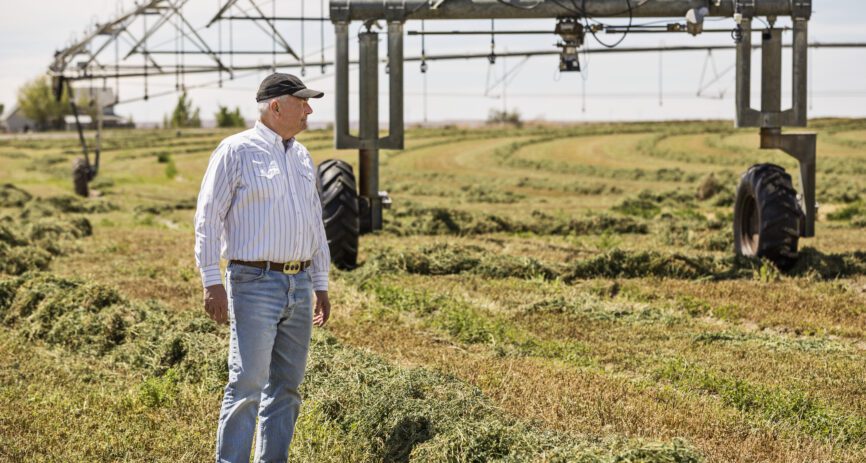
Cancer in rural communities: risks, barriers, and solutions
Generation after generation, families in rural America work tirelessly to cultivate the land, provide for their communities, and contribute to the nation’s well-being. Yet, beneath the stunning landscape and this honest calling lies a pressing and often overlooked health crisis: cancer.
This blog post explores the prevalence of cancer in rural communities, types of cancer in rural areas, barriers to care, and how cancer insurance can help.
Prevalence of cancer in rural communities
The prevalence of cancer in rural communities presents a mix of both challenges and encouraging signs.
While rural areas generally have lower rates of new cancer cases compared to urban areas, the cancer death rate in rural communities is higher. Recent CDC data shows that although cancer death rates have declined nationwide, this decline has been slower in rural America—dropping by just 1.0% per year compared to 1.6% per year in urban areas. This gap is partly driven by higher death rates from lung, colorectal, prostate, and cervical cancers in rural populations. New cases of lung, colorectal, and cervical cancers are also more common in rural counties, whereas rates of breast and prostate cancer tend to be lower.
Types of cancer in rural communities
Farmers and others living in rural communities face a higher risk of certain cancers due to unique environmental exposures.
For example, people in farming communities are at increased risk of skin cancer—the most commonly diagnosed cancer worldwide—because of long hours spent in the sun. In a recent RFD Today interview, David Winchester, M.D., surgical oncologist at City of Hope® Cancer Center Chicago, noted that one in every three agricultural workers experiences at least one sunburn annually. This is especially concerning, as just five sunburns over a lifetime can double the risk of developing melanoma.
Beyond sun exposure, residents in rural areas are more likely to come into contact with pesticides and other agricultural chemicals used to protect crops from weeds, insects, mold, and mildew. Some of these substances have been linked to cancer. For instance, the widely used herbicide glyphosate is classified by the International Agency for Research on Cancer as a probable carcinogen. Research has shown that farmers who use pesticides—and their spouses—have higher rates of several cancers, including multiple myeloma, acute myeloid leukemia, thyroid, testicular, peritoneal, lip, and prostate cancers. Additional studies have found that farmers also face increased risks for leukemia, lymphoma, colorectal, esophageal, liver, lung, oral, and skin cancers.
Barriers to cancer care in rural communities
The slower decline of cancer deaths in rural communities can largely be attributed to significant barriers to care, including:
- Geographic distance & transportation challenges: In many remote communities, there’s no public transportation, and patients may need to drive several hours to reach the nearest oncologist or a hospital capable of providing cancer treatment.
- Economic disparity: Rural states often experience higher levels of economic inequality, which creates significant barriers to accessing quality healthcare for many residents.
- Healthcare workforce shortages: Over two-thirds of U.S. counties facing primary care shortages are in rural areas.
- Limited insurance options and higher uninsured rates: Rural regions generally have fewer insurance providers. This reduced competition often results in higher premiums, making insurance coverage unaffordable for many.
Why is cancer insurance important for rural communities?
Supplemental cancer insurance provides policyholders with direct cash benefits for the prevention, detection, and treatment of cancer. It is designed to complement—not replace—primary health insurance that people may have through work or purchase individually. Unlike traditional health insurance, cancer insurance pays benefits directly to policyholders, allowing them to use the funds for any expenses, including medical bills or daily living costs.
Here are four key reasons why cancer insurance is especially important for rural communities:
- Support for wellness screenings and early detection: Benefits for preventive screenings and tests encourage rural residents to prioritize doctor visits, helping to reduce cancer risk or detect it early when treatment is more effective.
- Assistance with travel and lodging: Transportation and family lodging benefits help those in remote areas afford travel and accommodations when cancer treatment is far from home.
- Financial relief during treatment: Lump-sum payments upon diagnosis, plus coverage for surgery, radiation, and chemotherapy, can ease the burden of medical bills and everyday expenses while undergoing treatment.
- Care coordination and advocacy: Advocacy services assist rural patients with coordinating care, securing referrals and prior authorizations, comparing treatment costs, and resolving billing or claims issues.
We’re here for you!
Washington National is proud to service the insurance needs of the many Americans in rural farming communities who are overlooked by others in the industry. Contact us today to be paired with a local agent who will help you find the right coverage for your needs!
